(+44) 7967 889281

Playstation.com
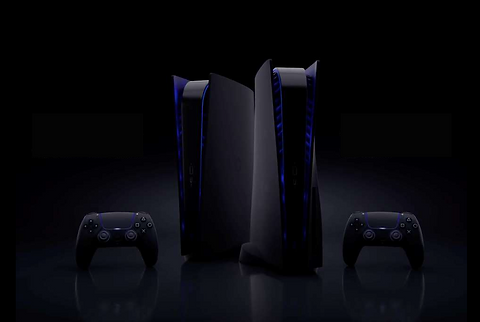
Sony Playstation has been leading the gaming industry since the launch of the PS One console back in Dec 1994. As console units began to connect to the internet, we saw huge changes in way people played online, but also in the way they purchase games & hardware. The format in which games are purchased has shifted considerably, with 60 % of users now wanting soft copies of games that can downloaded straight to their consoles without the need for discs. Whereas the process of purchasing soft copy games via a PS4 Console has been consistent with users needs, the on-line experience via Desktop, Tablet and Mobile required some improvement.
THE PROBLEM
Playstation operates across two customer sites. Users are able to browse games & view product information from a content website (playstation.com) and then make purchases through an Ecommerce site (store.playstation.com). Playstation.com acts as a brochure providing news, videos and information of current and upcoming Games & Hardware. PlayStation Store then allows users to purchase downloadable soft copies of Games & Add-ons directly to their PS4 Console. The main issue is that users need to experience a seamless user journey which feels like they are using one site without feeling they a required to switch between the two sites in order to check prices or place orders. The system must also allow users the freedom to easily search and purchase hard or soft copies of games whilst providing them with an enjoyable user experience.
RESEARCH
Competitive Benchmarking
The first part of my research process was to look at how our main competitors are trying to solve the same problem. I reviewed the websites and mobile apps of our main competitors X-Box, Nintendo and Game. I wanted to examine what they are doing really well that we could emulate and what they were doing not so well that we could improve on. It also gave me an opportunity to see what conventions have been established that we needed to follow. I analysed the Homepages, Search & Select methods and Customer Journey of the purchase process.
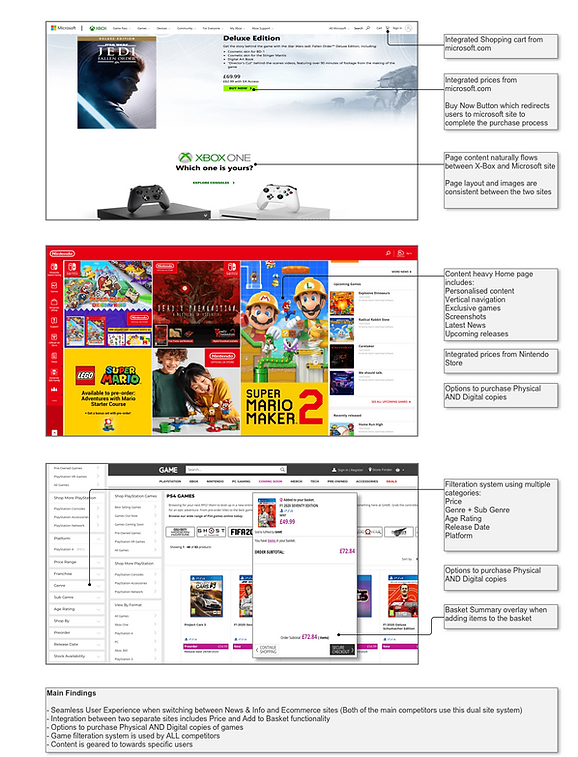
Online Survey
I personally engineered and conducted a survey based around existing customers and their needs when it comes to purchasing games & hardware. I wanted to find out what gamers are looking for from gaming sites and what they feel is missing to give them a truly unique experience when browsing games and news as well as making purchases.
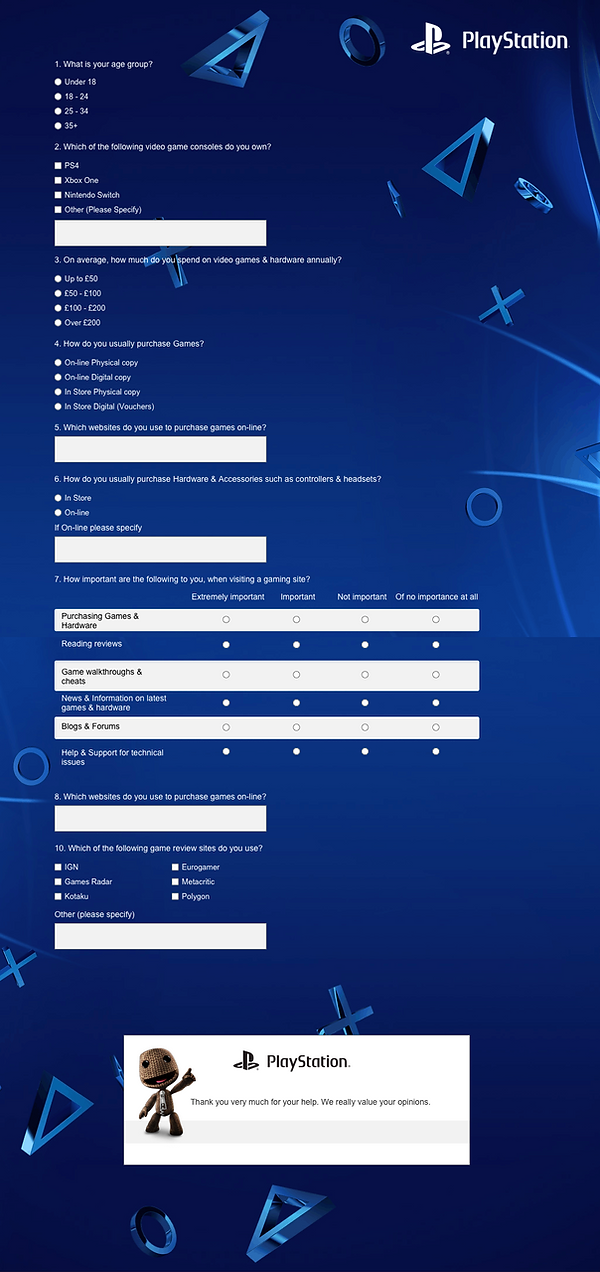
Customer Interviews
I conducted interviews with existing PlayStation users to discuss how they currently use playstation.com and the process they go through to purchase games & hardware. The interviews allowed me to gain a deeper insight into their goals, what their pain points were and what improvements they hoped to see on the site in the near future
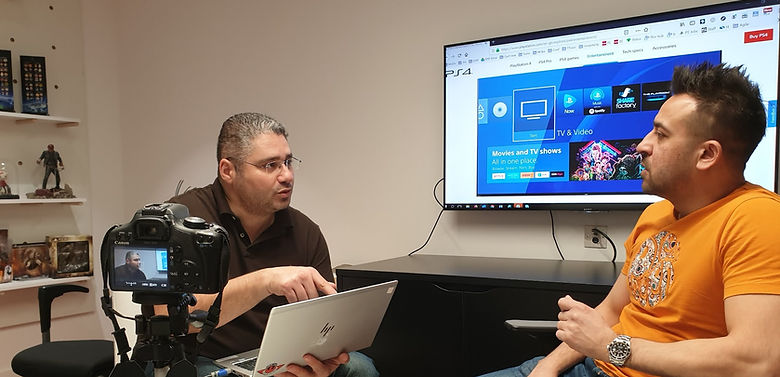
Usability Testing
I carried out a series of usability tests with users that were familiar with the site and who purchased game regularly. Users were asked to carry out a series of primary tasks such as purchasing Games and Hardware and secondary task of purchasing Game Add-ons. The tests allowed me to learn the users goals, behaviours and context of use. All tests were recorded with permission of the users, including recordings of the user as well as their on-screen actions. Notes were taken during the sessions and during video playback.
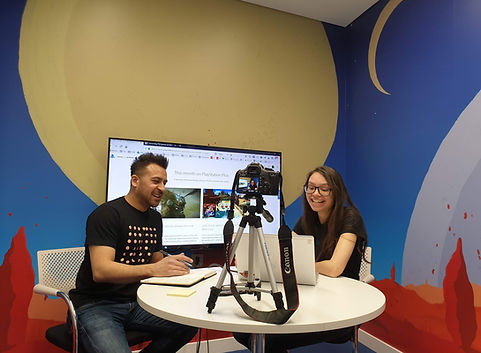
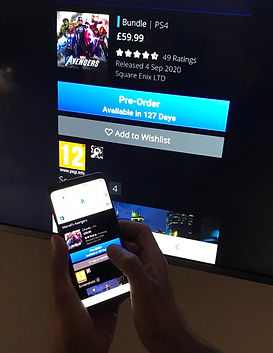
ANALYSIS
Affinity Diagram
With all the information gathered from Surveys, Qualitative Interviews, Usability Tests & Benchmark Testing it was time to analyse the data and work out what was relevant to improving Playstation.com. In order to gain a high quality output and faster analysis, I set about creating an Affinity Diagram allowing me to group areas of high importance that would later make up parts of the Users Journey when browsing and purchasing games & hardware. Members of the playstation.com team were involved with grouping the post it notes into relevant groups, encouraging discussions between Developers, Testers, and the Product Owner, allowing the whole team to gain a shared understanding of what we were trying to achieve.
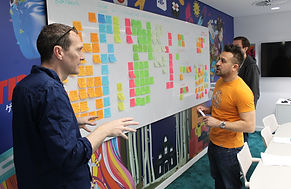
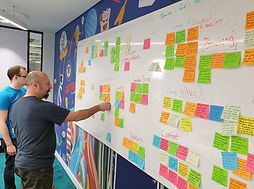
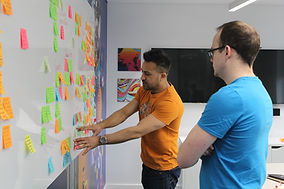
During the session all post it notes containing research information from the various sources were placed into groups and following further discussions were moved around accordingly. Following the session these groups were named and numbered according to which step in the purchase process they fell into.
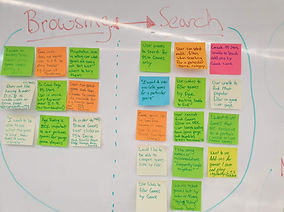
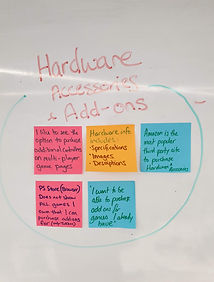


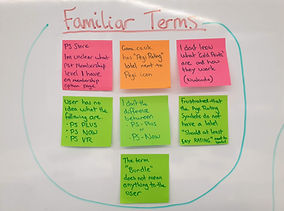
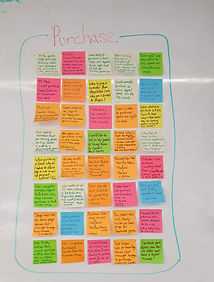
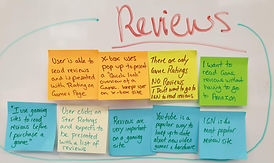

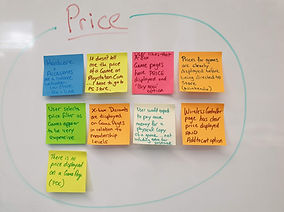
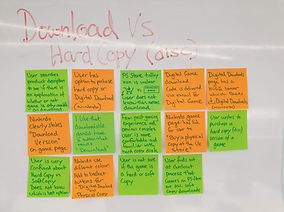

Customer Journey Map
Further analysis of the groups created from the Affinity Diagram allowed me to delve deeper into the key steps of the User Journey. For each step in that journey I examined what were the users goals and behaviours, in what context were they carrying out these steps, what were their pain points along the way and how did they feel throughout the journey. I created a Customer Journey Map as a more structured, simple & effective way to present the Customers point of view to the Product Owner and Business Stakeholders. The map provided an overview of key areas within the site that needed improvement in terms of User Experience.
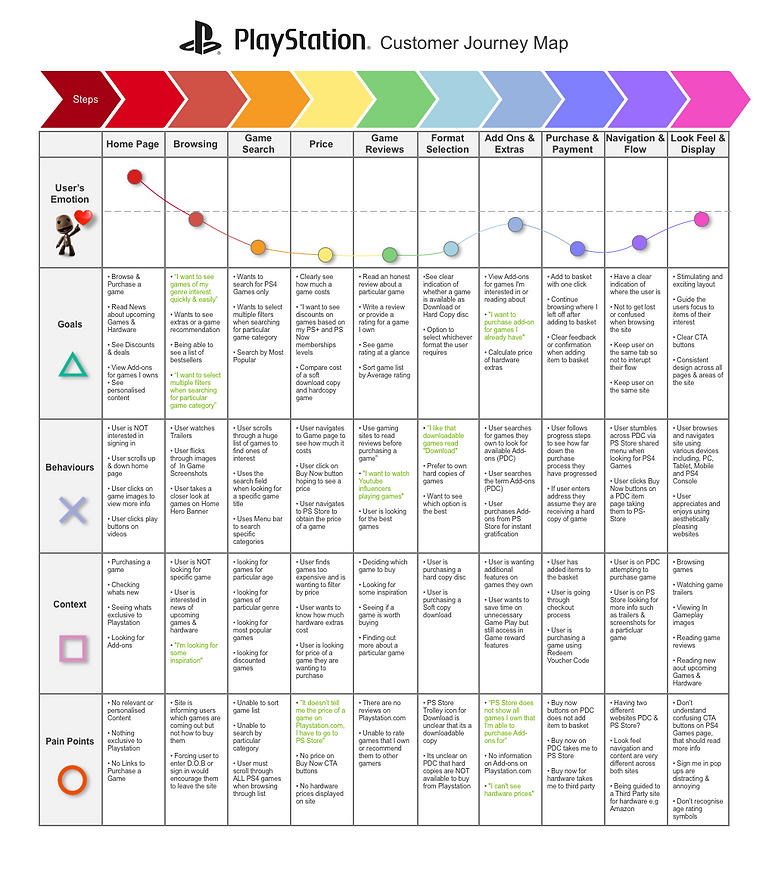
Research Conclusions
Following numerous discussions with the Product Owner, Stakeholders and Development teams, there was a general consensus that the following requirements would enhance the User Experience of playstation.com....
-
A seamless User Journey when browsing content across both sites and purchasing games, so the user feels like they are navigating through one site
-
A Customer Review System, allowing Users to rate games and read & write reviews
-
A Personalisation Module developed in Adobe Experience Manager that will load personalised content on the Home page for signed in users. Dynamic content will be based upon users recent gaming patterns and game purchase history.
-
A Game Finder that will improve the users browsing experience allowing them to filter a list of games by particular categories
Backend Development teams & System Architects confirmed that the system infrastructure was currently in place to allow development of these requirements, proving they were feasible from a technical point of view.
SOLUTION DESIGN
User Flow Diagram
The first part of the design phase was to create a User Flow Diagram of the proposed solution. From the analysis phase it was clear that Navigation and Flow was a key element of the playstation.com site that required updating. Users felt frustrated they were required to jumping from one site to another in order to browse games & hardware, check prices and finally place an order to make a purchase. The following flow diagram outlines the simplest path a user can take in order to browse games and make a purchase either from Playstation or a Third party in the case of purchasing hardware or hard copy games.
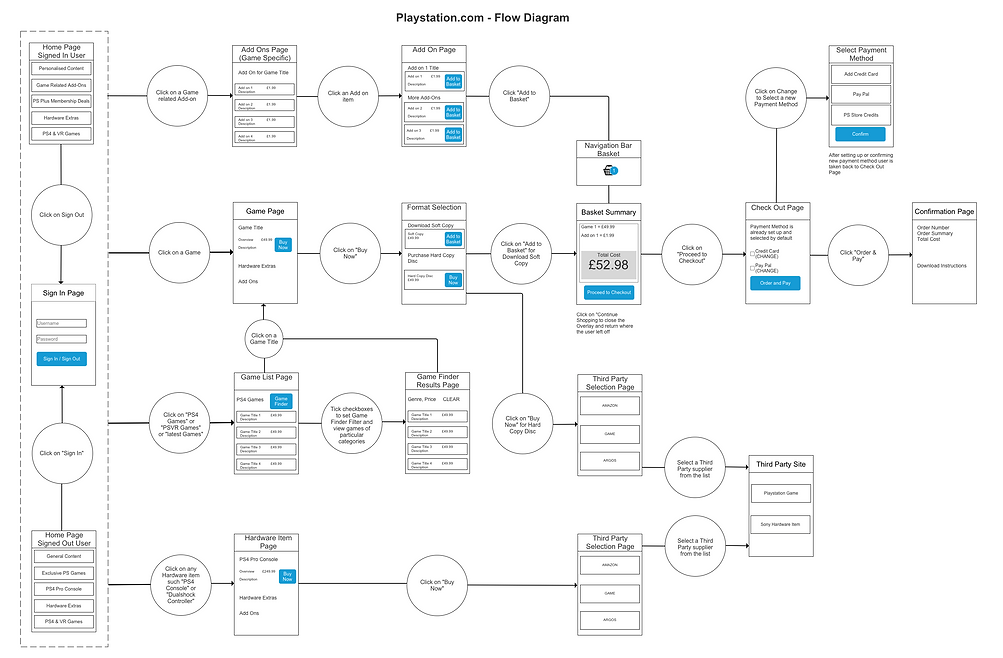
Sketches
After working out the user flow it was time to start visualising and designing interactions on the actual pages that were going to be redeveloped. A meeting was with held with the Product Owner to run through the flow as a typical user and to discuss the proposed wireframes.
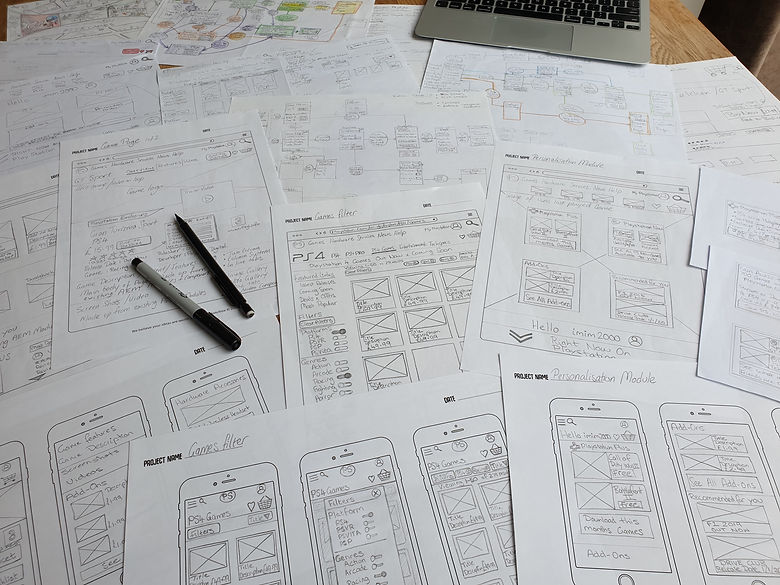
Purchase Flow
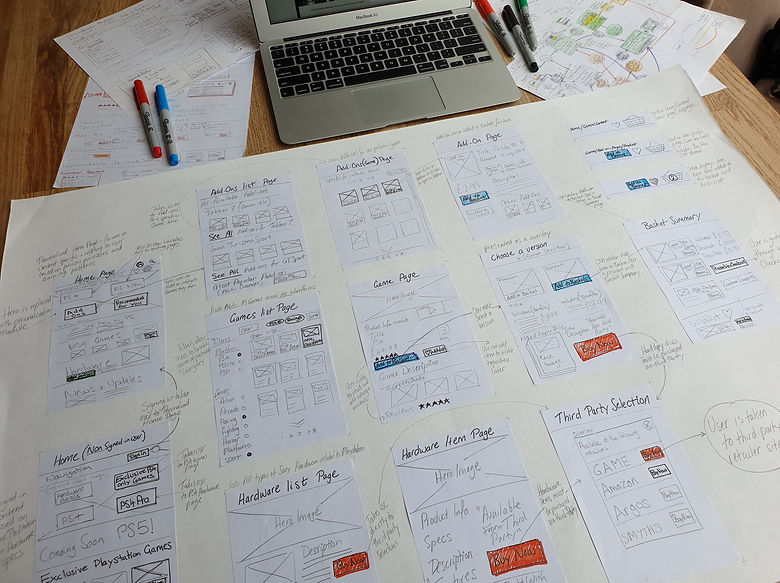
.jpg)
Desktop & Mobile Pages
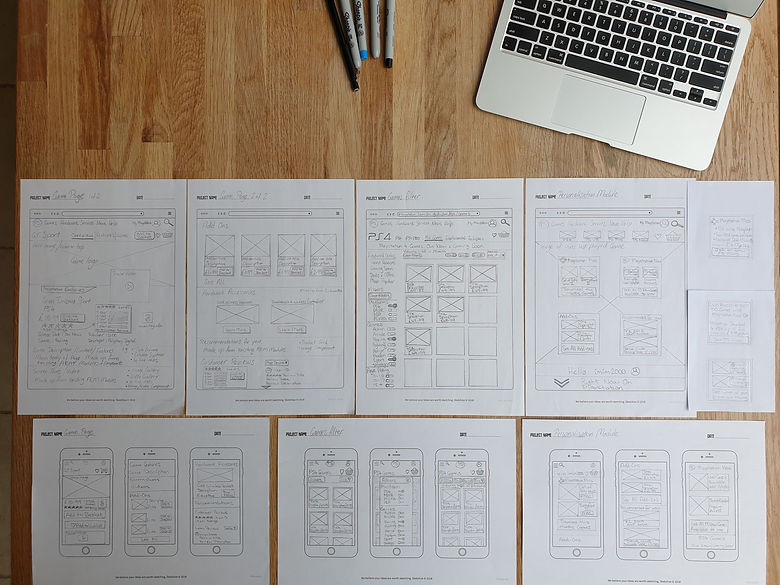
Desktop & Mobile Pages
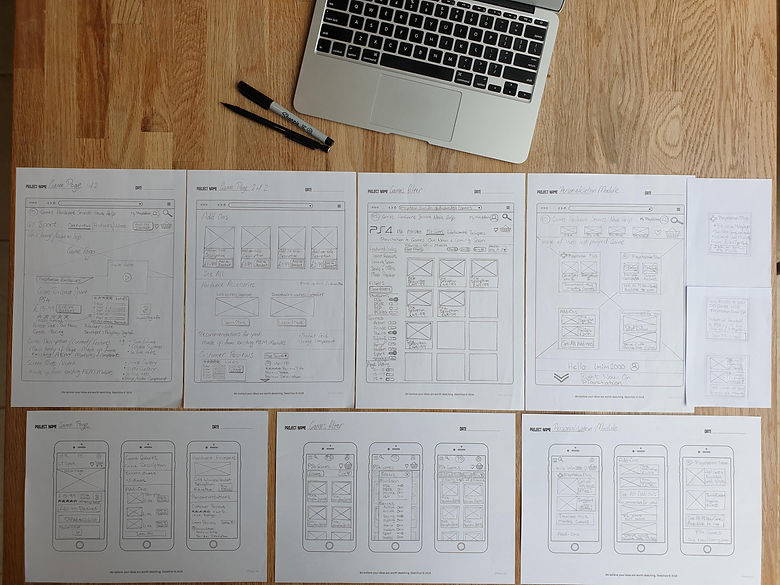
Game Page
Wireframes
Using Axure I created detailed Medium Fidelity Wireframes that were presented to the Product Owner and Business Stakeholders. These wireframes were the basis for development work carried out to create an integrated initial version of the updates within the Development and QA Test environments.
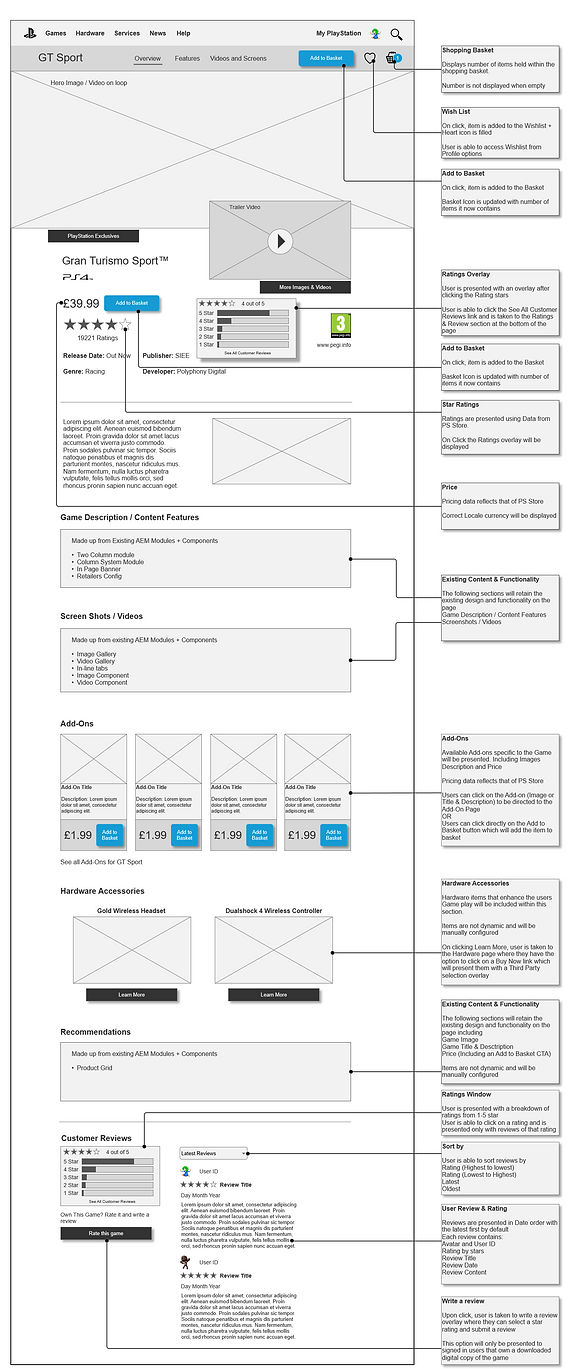
Personalised Home Page

Game Finder
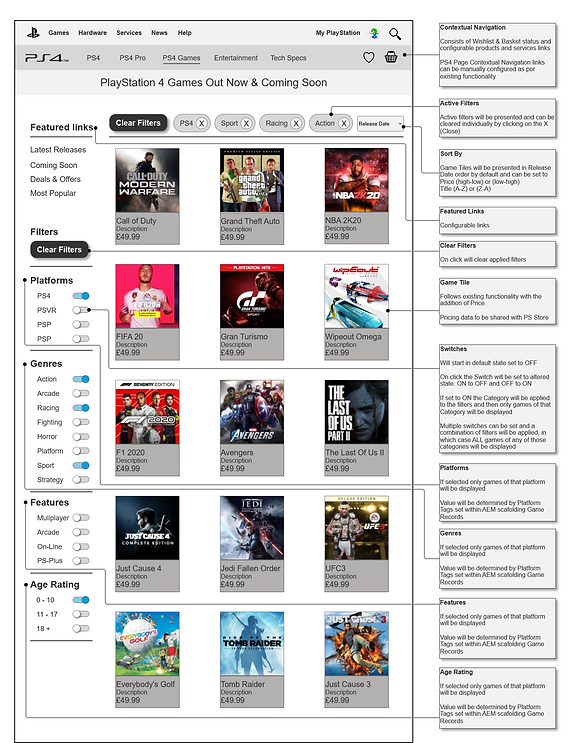
Validation Testing and Release to Production
Back End functionality for store integration has been implemented and tested by the QA team to ensure the shopping basket can be updated and the correct pricing data can be extracted from playstation store and used within the shared navigation bar of playstation.com
The Game Finder and Personalisation Module has been developed and deployed to a separate code branch within the QA environment. This was tested by the Quality Assurance team as part of the regular sprint cycles. Any design issues were fed back to myself and the wireframes were updated. The enhancements are now in review stages and awaiting deployment to Production. Acceptance testing was carried out by myself during the same sprint and the project was signed off by the Product Owner.
Due to copyright and a signed disclosure agreements, I am unfortunately unable to present screenshots of the finished product within my portfolio until the code has been released to Production.